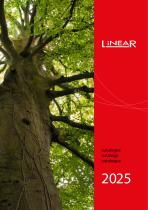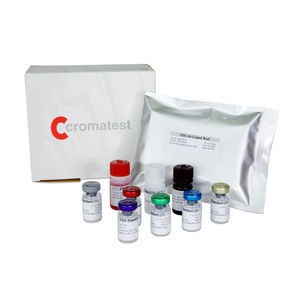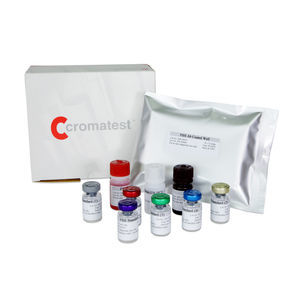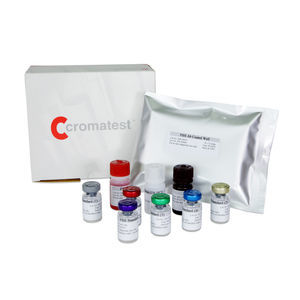
- Laboratory
- Laboratory medicine
- Solution reagent
- LINEAR CHEMICALS
- Company
- Products
- Catalogs
- News & Trends
- Exhibitions
Solution reagent kit 6107320 diagnosticLH
Add to favorites
Compare this product
fo_shop_gate_exact_title
Characteristics
- Type
- solution
- Applications
- diagnostic
- Tested parameter
- LH
- Storage temperature
Min.: 2 °C
(36 °F)Max.: 8 °C
(46 °F)
Description
Luteinizing hormone (LH) is produced in both men and women from the anterior pituitary gland in response to luteinizing hormonereleasing hormone (LH-RH or Gn-RH), which is released by the hypothalamus. LH, also called interstitial cell-stimulating hormone (ICSH) in men, is glycoprotein with a molecular weight of approximately 30,000 daltons. It is composed of two noncovalently associated dissimilar amino acid chains, alpha and beta. The alpha chain is similar to that found in human thyroid-stimulating hormone (TSH), follicle-stimulating hormone (FSH), and human chorionic gonadotropin (hCG).
The differences between these hormones lie in the amino acid composition of their beta subunits, which account for their immunological differentiation.
PRINCIPLE OF THE TEST
The LH Quantitative Test is based on a solid phase enzyme-linked immunosorbent assay (ELISA). The assay system utilizes a mouse monoclonal anti--LH antibody for solid phase (microtiter wells) immobilization and a mouse monoclonal anti-β-LH antibody in the antibody-enzyme (horseradish peroxidase) conjugate solution. The test sample is allowed to react simultaneously with the antibodies, resulting in LH molecules being sandwiched between the solid phase and enzyme-linked antibodies. After a 45-minute incubation at room temperature, the wells are washed with water to remove unbound-labeled antibodies. A solution of TMB Reagent is added and incubated for 20 minutes, resulting in the development of a blue color. The color development is stopped with the addition of Stop Solution, and the color is changed to yellow and measured spectrophotometrically at 450 nm.
Catalogs
General Catalogue
36 Pages
Exhibitions
Meet this supplier at the following exhibition(s):


Related Searches
- Assay kit
- LINEAR solution reagent
- Blood assay kit
- LINEAR molecular biology reagent
- Immunoassay assay kit
- Plasma assay kit
- Infectious disease detection kit
- LINEAR rapid blood test
- Rapid lateral flow test
- LINEAR diagnostic reagent
- LINEAR laboratory reagent
- LINEAR protein reagent
- Immunoassay rapid diagnostic test
- LINEAR cassette rapid test
- LINEAR rapid virus test
- LINEAR rapid serum test
- LINEAR rapid plasma test
- Histology reagent kit
- LINEAR rapid infectious disease test
- LINEAR rapid whole blood test
*Prices are pre-tax. They exclude delivery charges and customs duties and do not include additional charges for installation or activation options. Prices are indicative only and may vary by country, with changes to the cost of raw materials and exchange rates.















